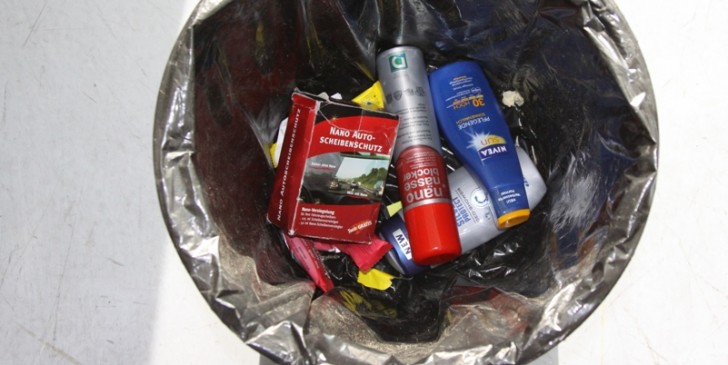What happens to nano-products at the end of their life?

Very little is known about the behaviour and possible environmental or health effects of nanomaterials once they're in the end-of-life phase and become part of the waste stream. The Institute of Technology Assessment of the Austrian Academy of Science has published a review on "nano-waste" as a part of the "nano-trust" serial.
In order to assess risks arising during their end-of-life-phase (EOL), the different disposal procedures as well as possible transformation processes of nanomaterials in waste treatment plants need to be investigated. At present, neither the special characteristics of nanomaterials nor the potential of recycling or recovering during the disposal phase are taken into consideration. Legal requirements for a separate treatment of waste containing nanomaterials do not exist. Such regulations would demand exact knowledge about the form, composition, quantity and concentration of applied nanomaterials. Unfortunately, this kind of information is usually not available. Therefore, research on the EOL-phase of products containing nanomaterials is rarely conducted. How waste containing nanomaterials behave in thermic, biological and mecanic-biological waste treatment plants is widely unknown.
Image Source: © 2014 The Innovation Society Ltd.